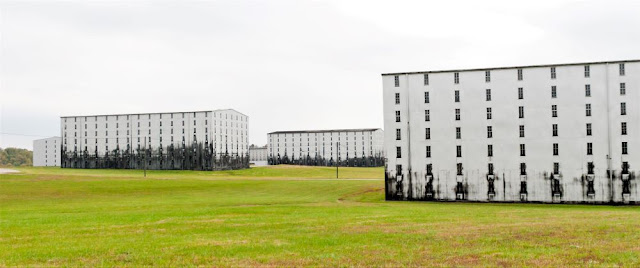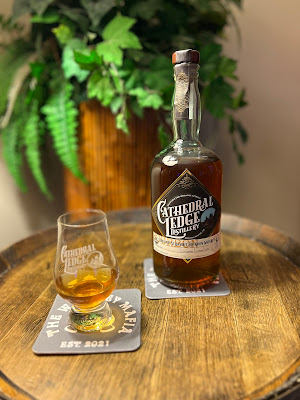Baudoinia, Baudoinia Baudoinia!
Baudoinia compniacensis better known as “whiskey fungus” has been in the news a lot in recent months, from a lawsuit against the largest whiskey producer in the United States, all the way down a small town town hall meeting in Maine. But what is it, and where does it come from?
Baudoinia compniacensis is a naturally occurring fungus found across most of North America, Europe, and Asia. It’s a colonizing fungus that spreads by releasing spores into the air, and dark gray to black in appearance. In other words it’s growing somewhere near you right now, but don’t worry it’s harmless. We will get to that in a minute.
First, why do they call it whiskey fungus? The first correlation between Baudoinia and aging spirits was discovered way back in 1874 by a Brandy distiller in Cognac, France where he found a black sooty substance clinging to the building walls he was aging Brandy in, from then on it has been known as whiskey fungus.
Turns out Baudoinia (like me) loves whiskey! Well that’s really to say Baudoinia feeds on ethanol and a whiskey rickhouse produces a buffet of ethanol in what is most commonly called “the angel’s share”. This is the small percentage of whiskey that evaporates out of a barrel over the course of a year. So if Baudoinia eats ethanol, why is it found all over the world and not just at a distillery? Easy ethanol vapor is found all over the world too. Anywhere there is fermentation there is ethanol, as most fruits and vegetables decay they begin to ferment and give off some small amount of ethanol. Some examples, when grapes ferment we get wine, apples we get cider, fermented cabbage gets you sauerkraut. Oh, and do you love fresh baked bread? Well the yeast ate the sugar, giving off CO2, and ethanol.
Other non-natural sources of Ethanol include chemical solvents, detergents, and of course Gasoline. Ethanol makes up about 10% of a gallon of gas, and the U.S. produces about 15 Billion gallons of ethanol every year.
The long and the short of it is Baudoinia is everywhere and has been forever. So is it harmful?
Simply put, NO! Study after study has found no harmful health effects of Baudoinia, not to pets, not to livestock, and not to humans. I think the best anecdotal evidence though is that for several hundred years men and women have worked in distilleries, wineries, bakeries and other places that Baudoinia is found with no apparent health issues.
So why has it been in the news so much if it’s been around for so long, and is so common? If you live close and I mean close to a source of excessive ethanol vapor, then structures, plants and trees could see an accelerated growth of Baudoinia. I read recently that a 20,000 barrel (roughly 1,060,000 gallons) rickhouse could distribute ethanol vapor up to 200 feet from the source. It’s unlikely to travel much further than that as ethanol vapor is heavier than air and it tends to settle quickly. But “Whiskey Fungus” sounds scary, it’s black so it looks scary and a few individuals looking to make an easy dollar, or prevent a small family distillery from expanding can use that fear to get what they want. I wonder if instead of whiskey fungus it had been called fresh bread fungus we would be having this conversation.
If we call the ethanol vapor given off by aging whiskey barrels “The Angel’s Share” and Baudoinia eats this vapor, does that make Baudoinia angelic?
Dan Kelley - 10/9/2023



Comments
Post a Comment